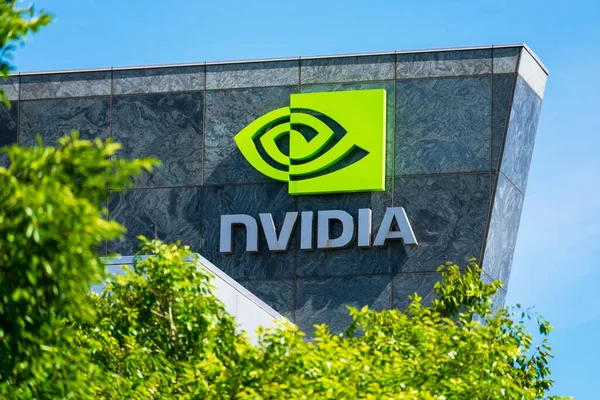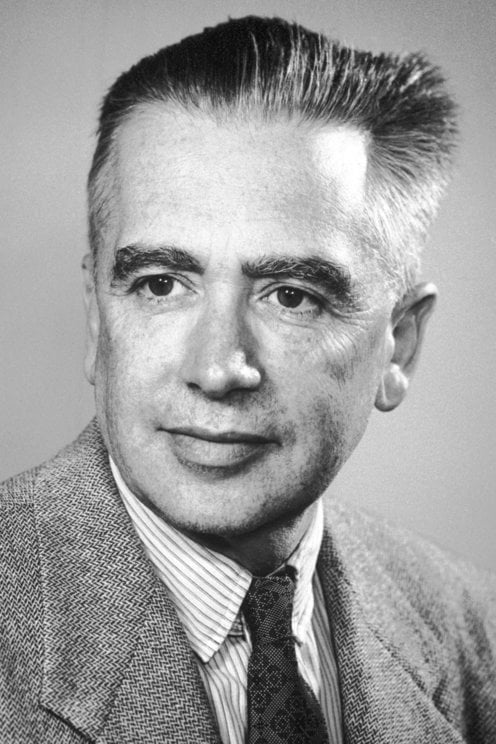NVIDIA and the Evolution of GPU Technology: From Graphics to AI Revolution

Introduction to GPUs and Their Fundamental Role
A
Graphics Processing Unit (GPU) is a specialized electronic circuit
initially designed to accelerate computer graphics and image processing.
Unlike general-purpose Central Processing Units (CPUs), GPUs are
optimized for parallel processing, making them exceptionally efficient
at performing multiple calculations simultaneously. This architectural
difference has transformed GPUs from simple graphics renderers into
powerful computational engines that now drive advancements across
diverse fields including artificial intelligence, scientific research,
and data analytics . The term
"GPU" was first coined by Sony in reference to the 32-bit Sony GPU
(designed by Toshiba) in the PlayStation video game console released in
1994, marking a pivotal moment in computing history .
NVIDIA
Corporation, founded in 1993, has been at the forefront of GPU
technology for over three decades, evolving from a graphics card company
into a global leader in accelerated computing and artificial
intelligence. Headquartered in Santa Clara, California, NVIDIA holds
approximately 80 percent of the global market share in GPU semiconductor
chips as of 2023. What began as
a focus on transforming gaming and multimedia experiences has grown
into a technological revolution that is reshaping entire industries.
NVIDIA's journey mirrors the evolution of computing itself, from
specialized graphics hardware to general-purpose parallel processors
that are now essential for modern AI applications .
The Technical Architecture and Working Principles of GPUs
The
fundamental power of GPUs lies in their massively parallel
architecture. While a typical CPU might have 4 to 64 powerful cores
optimized for sequential serial processing, a modern GPU contains
thousands of smaller, more efficient cores designed to handle multiple
tasks simultaneously. This makes GPUs exceptionally well-suited for
tasks that can be broken down into parallel operations, such as
rendering complex 3D scenes or processing large datasets in machine
learning algorithms.
At
their core, GPUs work by processing large blocks of data in parallel
through a pipeline that includes several specialized stages. For
graphics processing, this pipeline typically includes vertex processing
(transforming 3D coordinates), rasterization (converting vectors to
pixels), shading (determining color and lighting), and output merging
(combining all elements into the final image). NVIDIA's innovation was
in taking this graphics-specific architecture and making it increasingly
programmable, eventually allowing these same parallel processing
capabilities to be applied to general computational problems .
The
memory architecture of GPUs also differs significantly from CPUs. GPUs
utilize high-bandwidth memory systems (like GDDR6 and HBM2) that can
feed data to the thousands of cores simultaneously. This is crucial for
maintaining the parallel processing advantage, as memory bandwidth often
becomes the limiting factor in computational throughput. NVIDIA has
consistently pushed the boundaries of memory technology in its GPUs,
from the early SDRAM implementations to today's advanced GDDR6X and HBM3
memory systems .
Key
to NVIDIA's success has been the development of complementary software
ecosystems that unlock the hardware's potential. The CUDA (Compute
Unified Device Architecture) platform, introduced in 2006,
revolutionized GPU computing by allowing developers to write
general-purpose software that could execute on NVIDIA GPUs. This
transformed GPUs from specialized graphics processors into
general-purpose parallel computing engines, opening up new applications
in scientific computing, financial modeling, and eventually artificial
intelligence.
Historical Evolution of NVIDIA and GPU Technology
NVIDIA's
origin story begins in 1993 when three visionaries—Jensen Huang, Chris
Malachowsky, and Curtis Priem—founded the company with the goal of
bringing 3D graphics to the gaming and multimedia markets. The founders
first conceptualized their venture during a now-legendary meeting at a
Denny's roadside diner in East San Jose, united by their belief in
graphics-based processing as the future of computing.
With initial venture capital funding of $20 million from firms like
Sequoia Capital, NVIDIA began its journey in Priem's townhouse in
Fremont, California, before establishing formal headquarters in
Sunnyvale .
The
company's first product, the NV1 released in 1995, was an ambitious but
flawed graphics accelerator that processed quadrilateral primitives
rather than the industry-standard triangle primitives. This
architectural choice, coupled with incompatibility with Microsoft's
emerging DirectX standard, led to limited market success. A pivotal
moment came when Sega, after deciding not to use NV1 technology in its
Dreamcast console, invested $5 million in NVIDIA—funding that CEO Jensen
Huang later credited with keeping the company alive during this
precarious period.
NVIDIA's
fortunes changed dramatically with the 1997 release of the RIVA 128
(NV3), which embraced industry standards and delivered compelling
performance. The company was down to its last month's payroll when the
RIVA 128 launched, but the graphics card's success (selling about a
million units in four months) saved NVIDIA and established its
reputation in the industry. This near-bankruptcy experience led to
NVIDIA's unofficial company motto: "Our company is thirty days from
going out of business"—a phrase Huang used in internal presentations for
years to maintain a sense of urgency .
The
true breakthrough came in 1999 with the GeForce 256, marketed as "the
world's first GPU." This revolutionary product introduced hardware
transform and lighting (T&L), offloading these computationally
intensive tasks from the CPU and enabling unprecedented visual
complexity in 3D games. The GeForce 256's impact extended far beyond
gaming—its parallel processing architecture would later become the
foundation for general-purpose GPU computing and AI acceleration.
Throughout
the 2000s, NVIDIA solidified its position as a leader in graphics
technology while expanding into new markets. The company went public in
1999 and won contracts to supply graphics hardware for Microsoft's Xbox
and Sony's PlayStation. However, this period also saw challenges,
including a class-action lawsuit over defective mobile GPUs that was
eventually settled in 2010. NVIDIA responded by diversifying its
technology portfolio, making strategic acquisitions, and investing
heavily in parallel computing research.
The
2010s marked NVIDIA's transformation into an AI computing powerhouse.
The parallel processing capabilities that made GPUs excellent for
graphics rendering proved equally valuable for training neural networks.
Researchers began adopting NVIDIA GPUs for deep learning, culminating
in the 2012 ImageNet victory of AlexNet—a neural network trained on
NVIDIA GPUs that dramatically outperformed traditional computer vision
algorithms. This demonstrated GPUs' potential for AI and set the stage
for NVIDIA's current dominance in artificial intelligence hardware and
software.
NVIDIA's Pioneering Technologies and Innovations
NVIDIA's
technological contributions extend far beyond graphics processors,
encompassing revolutionary architectures, software platforms, and
computing paradigms that have transformed multiple industries. Each
innovation built upon the last, creating an ecosystem that has
consistently kept NVIDIA at the forefront of computing technology.
The
CUDA platform, introduced in 2006, represents one of NVIDIA's most
significant contributions to computing. CUDA provided the first widely
adopted parallel computing platform and programming model that enabled
developers to use GPUs for general-purpose processing (GPGPU). By
exposing the GPU's parallel computational capabilities through an
accessible programming interface, CUDA unlocked new applications in
scientific research, financial modeling, medical imaging, and more. This
technology proved particularly valuable as the demand for parallel
processing grew in fields like artificial intelligence and big data
analytics .
NVIDIA's
GPU architectures have consistently pushed the boundaries of
performance and efficiency. The Tesla architecture (2006) introduced
unified shaders, a major innovation that allowed more flexible
allocation of processing resources. Fermi (2010) added robust support
for IEEE 754-2008 floating-point arithmetic and ECC memory, making GPUs
suitable for scientific computing. The Kepler (2012), Maxwell (2014),
and Pascal (2016) architectures progressively improved performance per
watt while adding features like dynamic parallelism and mixed-precision
computing .
The
Volta architecture (2017) marked a turning point for AI acceleration
with the introduction of Tensor Cores—specialized units designed to
accelerate matrix operations fundamental to deep learning. This was
followed by the Turing architecture (2018), which added RT Cores for
real-time ray tracing, bringing cinematic-quality lighting to games and
professional visualization. The Ampere (2020), Hopper (2022), and
Blackwell (2024) architectures continued this trajectory, delivering
exponential gains in AI performance and efficiency.
In
graphics technology, NVIDIA has pioneered numerous groundbreaking
features. G-SYNC (2013) revolutionized gaming displays by synchronizing
refresh rates with GPU output, eliminating screen tearing. Deep Learning
Super Sampling (DLSS, 2018) used AI to reconstruct high-resolution
images from lower-resolution renders, dramatically improving performance
without sacrificing visual quality. Real-time ray tracing, introduced
with the RTX 20 series, brought Hollywood-quality lighting effects to
interactive applications .
NVIDIA's
innovations extend into system architecture as well. NVLink (2014)
provided a high-speed interconnect alternative to PCI Express, enabling
faster communication between GPUs and between GPUs and CPUs. The DGX
systems (2016 onward) packaged multiple high-performance GPUs into
turnkey AI supercomputers, while the Omniverse platform (2020) created a
real-time 3D design collaboration and simulation environment built on
USD (Universal Scene Description) .
Perhaps
most significantly, NVIDIA recognized early that the same parallel
processing capabilities that made GPUs excellent for graphics could
accelerate artificial intelligence. The company invested heavily in AI
research and development, creating optimized libraries, frameworks, and
entire systems tailored for deep learning. This foresight positioned
NVIDIA as the primary enabler of the AI revolution, with its GPUs
powering virtually every major AI breakthrough in recent years.
The Expanding Applications and Market Impact of GPUs
The
applications of NVIDIA's GPU technology have expanded dramatically from
their origins in computer graphics, now touching nearly every aspect of
modern computing and digital technology. This expansion has created
multiple multi-billion dollar markets where NVIDIA holds leadership
positions, while fundamentally transforming industries ranging from
entertainment to scientific research.
In gaming—NVIDIA's original
market—GPUs have enabled increasingly immersive and realistic
experiences. From the early 3D acceleration of games like Quake III
Arena and Unreal Tournament to today's ray-traced, AI-enhanced titles,
NVIDIA graphics technology has consistently pushed the boundaries of
what's possible in interactive entertainment. The company's GeForce
brand has become synonymous with high-performance gaming, with
innovations like DLSS and Reflex providing competitive advantages to
gamers .
The growth of esports, game streaming platforms like Twitch, and the
entire creator economy have all been enabled by advancements in GPU
technology.
Professional visualization represents another key
market for NVIDIA. The company's Quadro (now RTX) professional GPUs
power computer-aided design, visual effects, and architectural
visualization across industries. Applications that once required
expensive specialized workstations can now run on more accessible
hardware thanks to GPU acceleration. NVIDIA's partnerships with major
software vendors like Autodesk, Adobe, and Dassault Systèmes have made
GPU acceleration ubiquitous in creative and engineering workflows.
The
data center has emerged as one of NVIDIA's most important markets, with
GPUs becoming essential for accelerated computing. High-performance
computing (HPC) applications in scientific research, financial modeling,
and energy exploration leverage GPU acceleration to solve problems that
were previously intractable. NVIDIA's data center GPUs now power 70
percent of the world's fastest supercomputers (as of 2023), tackling
challenges from climate modeling to drug discovery .
Artificial
intelligence and deep learning represent perhaps the most
transformative application of NVIDIA's technology. The parallel
architecture of GPUs proved ideally suited for training neural networks,
with NVIDIA hardware becoming the de facto standard for AI research and
deployment. The company's GPUs were instrumental in training
breakthrough AI systems like ChatGPT, and NVIDIA's full-stack
approach—spanning hardware, libraries, frameworks, and pre-trained
models—has made it the backbone of the AI industry .
The 2022 AI boom, sparked by the public release of ChatGPT (which was
trained on 10,000 NVIDIA GPUs), dramatically increased demand for
NVIDIA's data center products and propelled the company to
trillion-dollar valuation territory .
Automotive
represents another growth market, with NVIDIA's Drive platform
providing AI computing for advanced driver assistance systems (ADAS) and
autonomous vehicles. Partnerships with automakers like Toyota,
Mercedes-Benz, and Volvo are bringing NVIDIA technology to
next-generation vehicles, while the company's Omniverse platform is used
for large-scale simulation of autonomous vehicle systems .
The
impact of NVIDIA's technology extends to edge computing and IoT
applications through the Jetson platform, which brings AI capabilities
to embedded and mobile devices. Healthcare has been transformed by
GPU-accelerated medical imaging and AI diagnostics, while robotics
research leverages NVIDIA's platforms for perception, navigation, and
control systems .
NVIDIA's market impact is reflected in its financial performance and valuation. From its IPO in 1999 at a split-adjusted price of $1.33 per share, NVIDIA's stock (NVDA) reached over $110 by April 2025, with a market capitalization approaching $2.7 trillion. The company achieved $130.57 billion in revenue for FY 2025, with particularly strong growth in its data center segment driven by AI demand. In June 2024, NVIDIA briefly overtook Microsoft as the world's most valuable publicly traded company, with a market capitalization exceeding $3.3 trillion—a remarkable journey for a company that began with three engineers and a vision for better 3D graphics.
Challenges and Future Directions for NVIDIA and GPU Technology
Despite
its remarkable success, NVIDIA faces significant challenges as it seeks
to maintain its leadership position in an increasingly competitive and
regulated technology landscape. These challenges span technical, market,
and geopolitical dimensions, requiring strategic navigation to ensure
continued growth and innovation.
One major challenge comes from
increasing competition in the GPU and AI accelerator markets. While
NVIDIA dominates discrete GPUs with an 80.2% market share (as of Q2
2023), competitors like AMD, Intel, and specialized AI chip startups are
investing heavily to capture portions of NVIDIA's lucrative data center
business . Tech giants such as
Google, Amazon, and Microsoft are developing custom AI chips (TPUs,
Trainium, Inferentia) to reduce reliance on NVIDIA's hardware, though
NVIDIA maintains an advantage through its full-stack approach and CUDA
ecosystem lock-in .
Regulatory
scrutiny represents another growing challenge. NVIDIA's attempted $40
billion acquisition of Arm Ltd. in 2020 was abandoned in 2022 after
facing opposition from regulators worldwide, highlighting the increased
antitrust attention on major chip industry deals .
In September 2023, NVIDIA's French offices were raided as part of a
cloud computing antitrust investigation, and regulatory bodies in the
EU, China, and elsewhere are closely examining the company's dominant
position in AI chips . As GPUs
become increasingly essential infrastructure for the digital economy,
NVIDIA may face more regulatory challenges similar to those encountered
by other tech giants.
The geopolitical landscape presents
additional complexities, particularly regarding the semiconductor supply
chain and export controls. Restrictions on selling advanced AI chips to
China have forced NVIDIA to create modified versions of its products
for the Chinese market, while the broader semiconductor industry's
concentration in Taiwan creates potential supply chain vulnerabilities .
NVIDIA's fabless model—relying on partners like TSMC for
manufacturing—means it must carefully navigate these geopolitical
tensions while ensuring reliable production of its chips.
Technologically,
NVIDIA must continue pushing the boundaries of performance and
efficiency to meet the insatiable demands of AI and high-performance
computing. The company's roadmap includes several promising directions:
Advanced Packaging and Chiplet Designs:
Future GPUs will likely adopt more sophisticated chiplet-based designs,
as seen in NVIDIA's Blackwell architecture, to continue scaling
performance beyond the limits of monolithic chips .
Photonic and Quantum Computing:
NVIDIA is investing in next-generation computing paradigms that may
eventually complement or succeed traditional electronic GPUs, including
optical computing and quantum computing simulations .
AI-Assisted Chip Design:
NVIDIA is using its own AI technologies to accelerate the design of
future GPUs, creating a virtuous cycle where each generation of chips
helps design the next .
Energy Efficiency:
As data center power consumption becomes a growing concern, NVIDIA is
focusing on improving performance per watt through architectural
innovations, specialized accelerators, and advanced cooling solutions .
Software Ecosystems:
NVIDIA will continue expanding its software platforms like CUDA,
Omniverse, and AI Enterprise to maintain its full-stack advantage and
make its hardware more accessible to developers .
The
future applications of GPU technology are equally exciting. Digital
twins—detailed virtual models of physical systems—are emerging as a
major use case combining NVIDIA's graphics, simulation, and AI
capabilities. The metaverse concept, while currently facing skepticism,
may eventually require the scale of real-time 3D rendering and AI that
NVIDIA's technologies provide. In healthcare, GPU-accelerated AI is enabling breakthroughs in drug discovery, medical imaging, and personalized medicine.
Perhaps
most transformative is NVIDIA's role in the ongoing AI revolution. As
AI models grow larger and more sophisticated, they require increasingly
powerful and efficient hardware. NVIDIA's GPUs, combined with its
networking technologies and software optimizations, are positioned at
the center of this transformation. The company's investments in
generative AI, large language models, and AI safety research suggest it
intends to remain the primary enabler of AI advancements.
From
its origins in 3D graphics to its current position as the engine of the
AI revolution, NVIDIA's journey demonstrates how specialized computing
architectures can evolve to transform entire industries. The GPU,
initially designed to render pixels on a screen, has become one of the
most important computational technologies of the 21st century—a
testament to the vision of NVIDIA's founders and the company's
relentless focus on innovation. As computing continues to evolve,
NVIDIA's ability to anticipate and shape technological trends will
determine whether it can maintain its remarkable trajectory in the
decades ahead.





